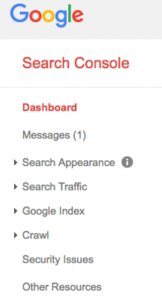— August 6, 2017

WikiImages / Pixabay
When it comes down to it, your personalization strategy will only be as successful as the effort you apply. While it is certainly possible to see impressive results without a real strategy in place – simply by implementing campaigns here and there when you spot opportunities – a broader, long-term strategy can help you realize success over time. Even if it is simplistic, a defined strategy will help ensure you’re achieving specific goals, prioritizing your ideas, measuring your success, and ultimately creating improved customer experiences.
As is the case with most new initiatives, you should start with some research first. We recommend three places to begin:
1. Your Challenges and Goals
Begin by thinking about the challenges you are facing and the goals you want to achieve. Think about the key goals for the channels you are considering for personalization (website, web app, mobile, search, email, etc.). Then give some thought to how personalization can help you accomplish your goals in each of those channels. Increasing conversions, reducing bounce rate, improving ROI of a specific marketing tactic, increasing average order value, improving upsells, increasing retention, etc. are all common goals for marketers employing personalization.
Push yourself to think beyond the challenge or goal itself. Continue to ask yourself “why?” whenever you identify a challenge or goal. For example, if you want to increase conversions (because everyone wants to increase conversions), ask yourself “why?” Why are you struggling with conversions today on your site? Why might one segment be converting better than another? What tactics currently work well for driving conversions? You want to get to the root of a problem to ultimately help you address it.
2. Your Data
If you are incessantly asking “why?” during your strategy sessions, you will naturally turn to your data. What does your data say about your challenges? Where are the opportunities? Analyze the funnels on your site and identify the drop-off points. Find the low-hanging fruit, such as opportunities for lower exit rates for highly trafficked pages. After you identify your challenges and goals, form some hypotheses about why something is the way it is so you can begin to find answers within the data.
You have a lot of data available to you, so this stage can be quite overwhelming. But this process can help you uncover endless opportunities for improvement with personalization.
3. Technology Capabilities
At this point in the planning process, you may have a lot of general ideas about how you want to leverage personalization. A concrete understanding about what is possible right now (both inside your organization as well as with existing technology) can help you refine those ideas. There is a lot that can be done today with the latest technology. But if your ideal personalization strategy involves tying online to offline via RFID chips implanted in each of your customers, you will find that you are currently out of luck. On the other hand, there is probably more available to you than you realize, so your strategy could end up even stronger than you originally expected!
I hope, of course, that the Evergage blog and other content resources can assist you in this area. But you will probably want to supplement these resources with some conversations with vendors to understand what is possible. But be aware that many martech vendors have recognized the importance of personalization — so it can be tough to find a vendor that doesn’t claim to offer personalization capabilities. Use these questions to guide your conversation.
Final Thoughts
Once you have begun digging into each of these three areas, you should then be ready to start fleshing out your personalization strategy. You should also begin documenting your thinking and getting buy-in from the appropriate internal resources (such as key members of the marketing team, e-commerce team, senior management and other teams across the organization) – something that is always a good idea when making a major change.
Business & Finance Articles on Business 2 Community
(67)





